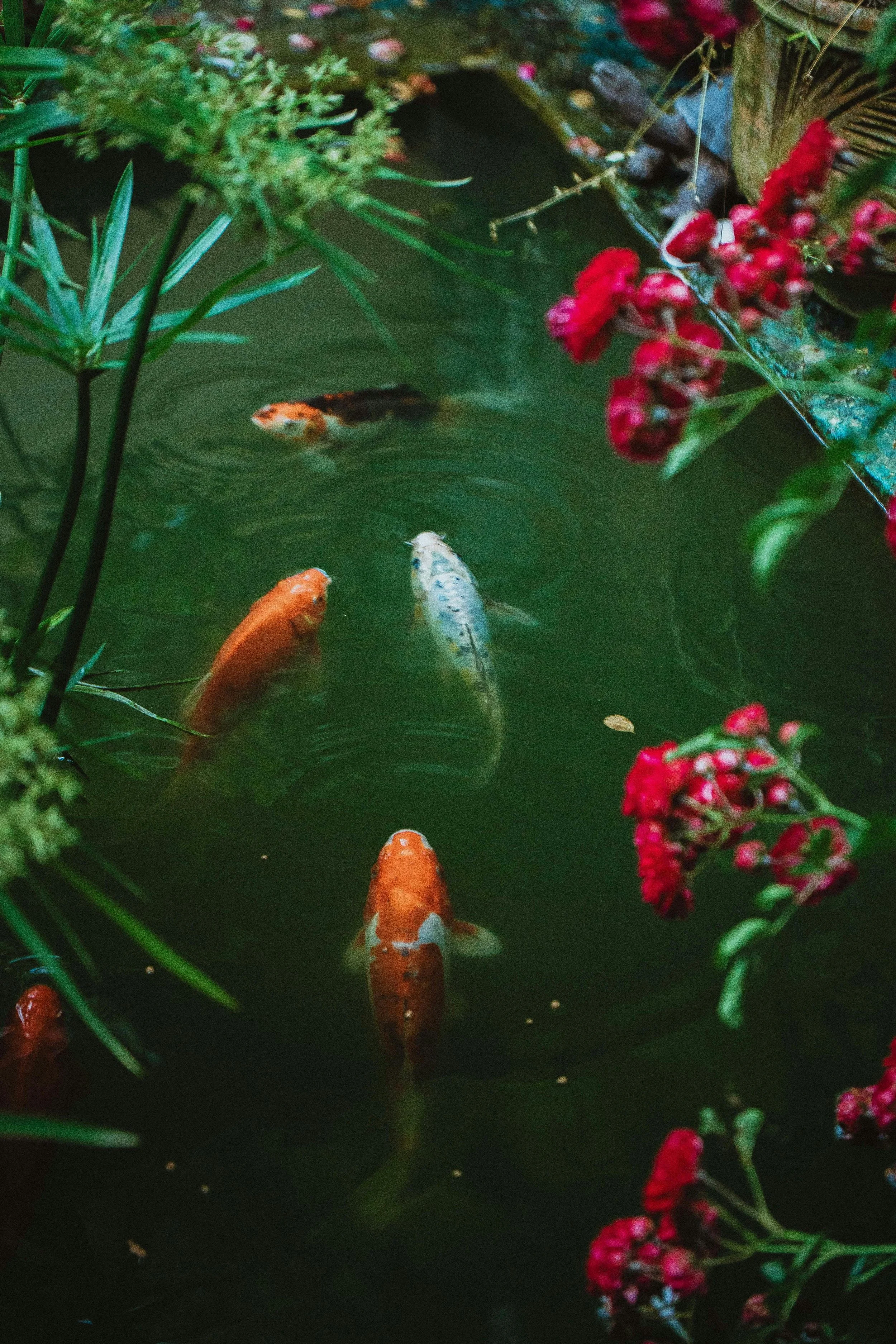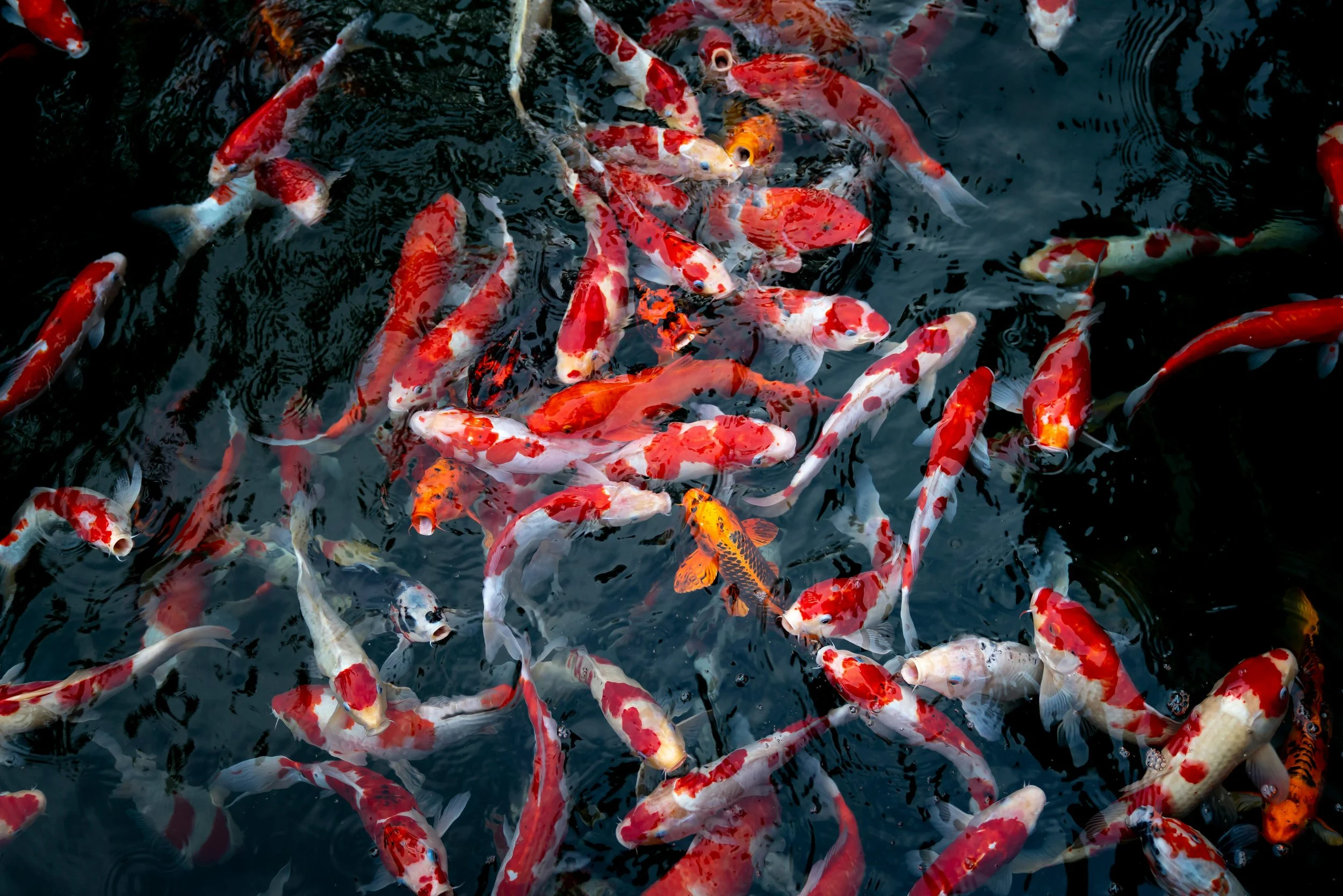Koi Ponds of Palos Verdes: A Serene Symphony of Water, Color, and Life
Nestled between ocean cliffs, canyon gardens, and winding roads, koi ponds are a popular feature of the lush landscapes across the Palos Verdes Peninsula. These tranquil oases offer not only visual beauty and calming ambiance, but also a living ecosystem that captivates residents, visitors, and garden lovers alike. Whether tucked into a backyard or incorporated into elaborate estate grounds, koi ponds bring an air of elegance—and a splash of color—to the Southern California lifestyle.
What’s in a Koi Pond?
At its simplest, a koi pond is a man-made water feature designed to house koi fish, with systems that support the health of the fish and the clarity of the water. But a well-crafted koi pond is far more than just a hole filled with water. It typically includes:
Filtration systems (mechanical and biological) to keep water clean and safe
Pumps to circulate water and oxygen
Aquatic plants like water lilies or lotus to provide shade and balance nutrients
Rocks and landscaping to create a natural aesthetic
Lighting to enhance nighttime beauty
Waterfalls or fountains for movement, oxygenation, and tranquility
Why Do People Love Koi Ponds?
There’s a reason koi ponds have become such a popular addition to homes in Palos Verdes:
Beauty and Movement: The vivid colors of koi gliding through water create a mesmerizing visual experience.
Relaxation and Stress Relief: The sound of flowing water and the presence of fish are known to calm the mind.
Connection to Nature: A koi pond invites birds, dragonflies, and other wildlife into your yard.
Symbolism and Spirituality: In many cultures, koi fish represent good fortune, perseverance, and transformation.
Personal Expression: From minimalist Zen-like water gardens to elaborate ponds with bridges and waterfalls, each pond reflects the owner’s aesthetic.
The Cons to Consider
As enchanting as koi ponds are, they do come with challenges:
Maintenance: Ponds require regular cleaning, water testing, and seasonal care.
Algae and Water Quality: Without proper filtration, algae can take over, and fish health can suffer.
Predators: Raccoons, egrets, herons, and even neighborhood cats can pose serious threats to koi.
Cost: Building a high-quality pond can range from $5,000 to $25,000+, depending on size and features.
Mosquitoes: Without proper water movement, stagnant areas can become breeding grounds.
What Types of Fish Live in Koi Ponds?
Koi (Nishikigoi): The stars of the pond, koi come in dazzling colors—white, black, yellow, red, blue, and cream—with patterns that make each one unique.
Goldfish: Often used in smaller ponds or with koi; easier to care for but less long-lived.
Orfe or Shubunkin: Sometimes used for variety, but koi are dominant in most designs.
Fish Needs:
Clean, oxygenated water between 65–75°F
Proper nutrition (pellets, vegetables, occasional treats)
Depth of at least 3 feet to protect from predators and temperature shifts
Shade to prevent sunburn and control algae
Space: Each adult koi may need 250 gallons of water or more
Predator Protection Tips
To keep your koi safe:
Pond Depth: Ensure the pond is at least 3 feet deep so predators can’t easily wade in.
Netting: Install pond nets or protective mesh, especially at night.
Motion Sensors or Lights: Sudden light or water sprays can scare off birds and animals.
Decoy Predators: Heron or owl statues can act as deterrents.
Floating Plants: Water lilies and floating plants provide hiding spots for fish.
Overhangs or Rock Shelters: Give koi a place to retreat and hide.
How to Build or Improve Your Koi Pond
1. Plan Smart:
Choose a location with partial sun
Avoid placing it under trees to reduce debris
Determine pond size based on your number of koi
2. Install Filtration & Circulation:
Use both biological and mechanical filters
Add UV clarifiers to control algae naturally
Waterfalls or aeration systems help keep water oxygenated
3. Add Life Thoughtfully:
Start with hardy koi or goldfish
Gradually introduce aquatic plants for shade and balance
Monitor water chemistry (pH, ammonia, nitrites)
4. Commit to Maintenance:
Skim leaves and debris regularly
Perform partial water changes (10-20%) every 1–2 weeks
Clean filters monthly and monitor water levels
Final Thoughts: A Living Masterpiece
A koi pond is more than a garden feature—it’s a living, breathing work of art that connects people to nature, provides sanctuary to wildlife, and brings daily joy to those who gaze into its waters. Whether you’re just dreaming of one or are already enjoying the shimmer of koi in your yard, these ponds are a reminder of life’s balance: beauty, responsibility, peace, and wildness.
On the Palos Verdes Peninsula, where nature and artistry meet, koi ponds are a natural fit—and a serene way to make your outdoor space feel like a private retreat.


